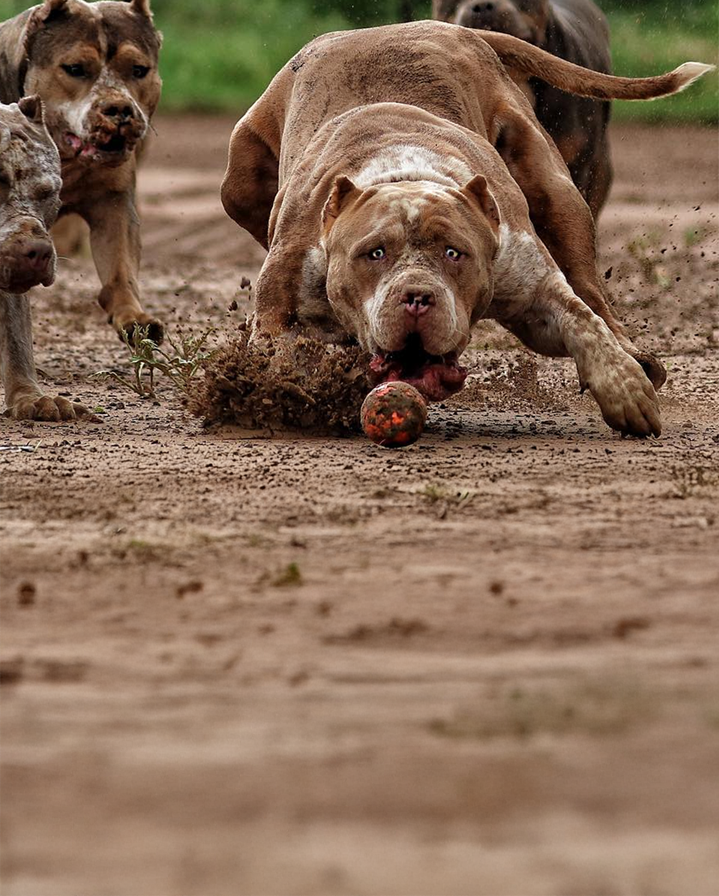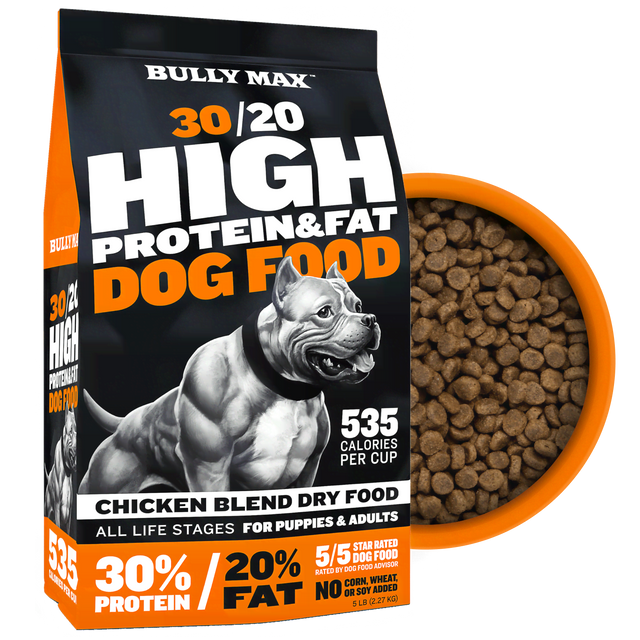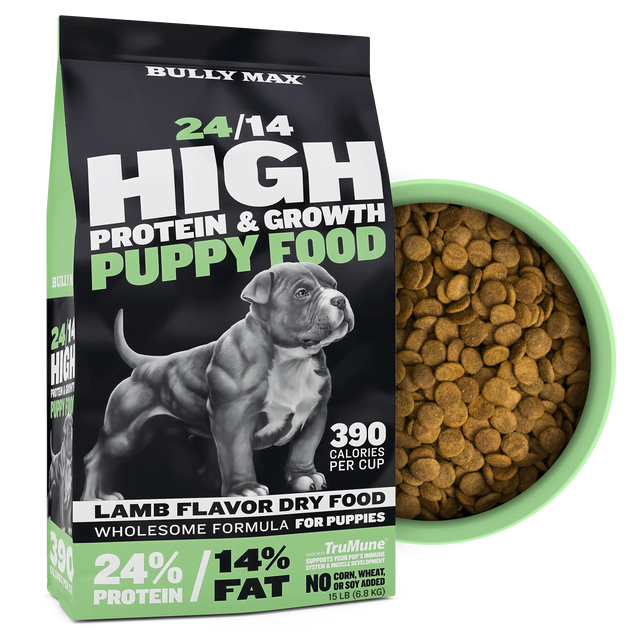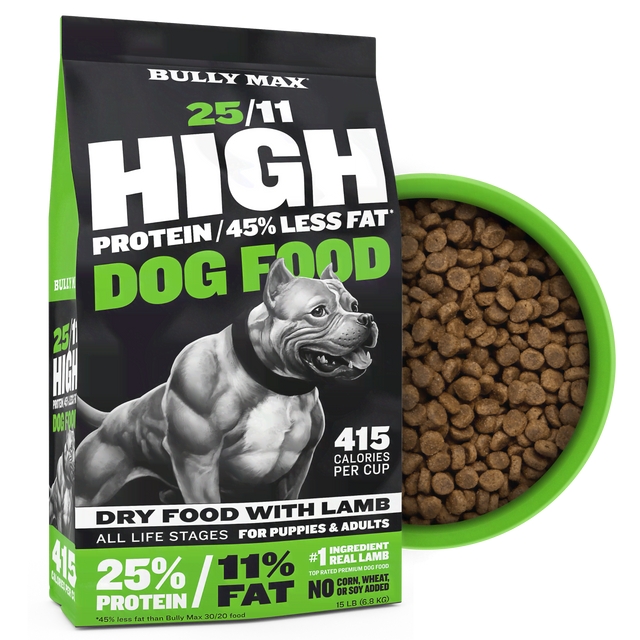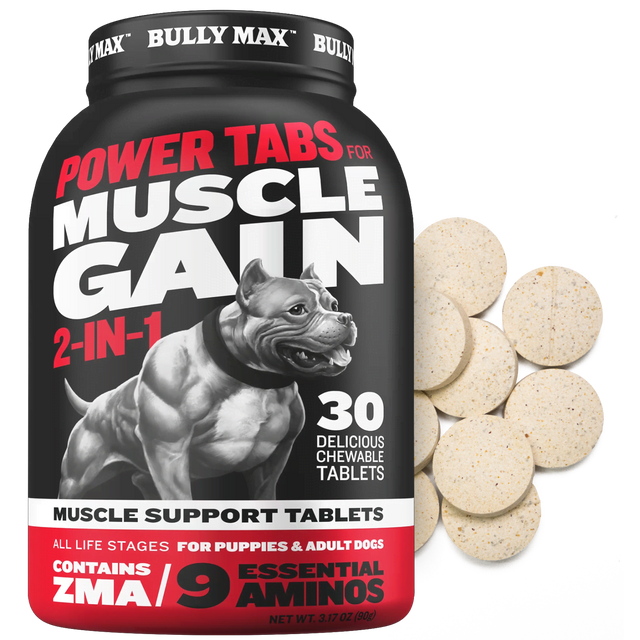Dog Muscle and Weight: How to Get Your Dog to Bulk Up
If you’re among the many dog owners trying to help your dog gain weight, it can be a challenge to know how to approach this goal in a healthy way. There are a wide variety of reasons that a dog might be underweight, and what constitutes a healthy weight differs from dog to dog. It’s helpful to do as much research as possible in the early stages of your efforts to bulk up your dog and build your knowledge about your dog’s ideal weight from credible, vetted sources, including your veterinarian.
An important question to reflect on is why your dog needs to gain weight. Are they underweight due to a previous hardship? Do you have an older dog that needs to maintain a degree of muscle mass to keep full mobility? Or are you the proud owner of a new puppy that you hope to show or have compete professionally one day? All of these and more are valid reasons for wanting to help your dog bulk up, but all require slightly different approaches.
At Bully Max, we’re committed to just one thing: the health and happiness of our pooch partners. Start your exploration of dog muscle and weight here and read on to learn more about the different reasons that dogs might need to gain weight, how to accomplish your pet’s weight gain safely, and what to do if your dog has recently experienced unexplained weight loss.
How to Tell If Your Dog Needs to Gain Weight
A responsible dog owner should not attempt to make a dog gain weight without a verifiable and vet-approved reason for doing so. The first step in knowing what a healthy weight is for your dog is a visit to your veterinarian. The vet can give you medical specifics on why your dog may be underweight, whether underlying health problems are putting your dog at any kind of risk, and how to manage body weight for older dogs.
The following list provides a few scenarios where it might be advisable to help your dog gain weight:

- You found your dog and are unsure what their life was like before. If you have found a skinny dog and decide to take them in, you will want to bring them to a veterinarian right away. Dogs that have been on the streets or otherwise not fed properly may be battling a variety of health issues, like intestinal worms or a loss of appetite that is impacting their muscle mass. A vet can outline a nutrition plan that includes quality food to help your dog get to their ideal weight.
- Your pooch has protruding bones. Although we know it sounds obvious, it can sometimes be hard to tell what is normal for rib or hip visibility for different dog breeds. Older dogs will sometimes lose weight, much like people do, as they lose muscle mass with age. Some thinner breeds, such as greyhounds, are biologically designed to be streamlined. However, no dog of any age or breed should be displaying ribs that you can fit your fingers past or hips that jut out from the rest of the dog’s hindquarter body mass. Waists should not be tucked behind your dog’s ribs, and there should be at least a half-inch to an inch of body fat between any outer bone and your pet’s skin.
- Your dog’s skin is sagging. Skin tells a story when it comes to our estimation of healthy dogs. Sagging skin in most adult dogs is an indication that your dog may not be at a healthy weight or that other medical conditions are affecting your dog’s ability to get the most out of mealtime.
7 Tips to Help Your Dog Gain Weight and Muscle
Whatever the reason for your dog to be underweight, there are a few ways to help them get to their ideal weight. Your dog’s health is very important, and we have outlined a few tried-and-true tips that can help you put the right kind of weight on your dog, no matter what has kept or taken it off before.
Consider a High-Quality, High-Calorie Dog Food
Your dog’s diet is the first building block to their health and well-being. This includes their physical appearance with regard to muscle tone, girth, and ideal weight. When it comes to gaining weight, a popular option is to add more calories to your dog’s diet through additional small meals.
However, the key is to not add calories for the sake of calories. While anyone can quickly pick out a dog food that claims to be high calorie, many forget to check the label and might not notice the kibble is actually filled with fillers and additives that outweigh what little vital protein may actually be present.
The reality is that helping your dog get to their optimal level of weight and health is far less about the amount of food given as the kind. Look for a brand like Bully Max that can increase your dog’s caloric intake through good carbs and no unhealthy additives. Ingredients like brown rice and chicken meal will help your dog build body weight in the best way.
Add Vitamins and Supplements to Your Dog’s Diet
As a dog owner, you could be feeding your beloved pet the best dog food in the world and still not see the kind of muscle mass development that you might wish. This is because it takes more than high-protein kibble to build muscle. Ingredients like amino acids and probiotics that you can find in the right muscle-building supplements such as Bully Max Muscle Builder can help fill in any gaps in your dog’s nutrition plan.
Many times, underweight dogs come with health issues that have been exacerbated by a lack of mineral content and vitamin-rich elements in their diet. If you adopted a skinnier pitbull, for instance, you might be tempted to rectify any body weight issues they might have by feeding highly caloric human food. While there is no doubt that our bullies love tasty human-grade treats like peanut butter, the truth is that your pet’s overall health and ability to build muscle will be much more enhanced by a more dog-centric health powder designed to meet your dog’s unique nutritional needs.
Look for ingredients like vitamin E, flaxseed, folic acid, and other enzymes to ensure that your pooch is getting all the essential supports necessary for total health, inside and out. Also, check labels to see if the products in question are recommended by veterinarians or, better yet, if veterinarians had a hand in developing the blend.
Ensure Your Dog Gets Proper Exercise

Yes, what your dog eats is critically important, but the food factor is far from the only metric that you should use to maintain or increase their weight. Your dog’s health is as wrapped up in how much they exercise as it is in how many high-calorie meals are available to them in a given day. Dog owners who want to put a healthy weight on their dogs must realize that lean muscle and increased overall bulk are natural byproducts of efficient and healthy exercise.
We know, you are probably thinking: “My dog goes through toys like there’s no tomorrow, though! How do I exercise them properly?” To this, we reply: Not all dog toys are created equally. If you’ve got a power chewer, Bully Max may have just the ball for your “good boy” or “good girl.” Look for vet-designed balls and toys made of more indestructible materials and designed for the direct improvement of mental and physical health. Toys like the ever-popular spring pole allow your pet to get a full cardio workout, have a blast for hours, reduce stress, and build muscle mass — all while you do little but enjoy the show!
Bear in mind that you don’t even have to buy special toys to make sure that your special friend gets the exercise they need. Just invest in a heavy-duty resistance leash with a bungee element and get out there for a little tug-of-war or a nice walk with your furry family member. The goal is just to engage your pet in daily exercise as you work toward building their optimal health.
Encourage a Stress-Free Environment
Some dogs can become picky eaters when they’re stressed out, so another thing you’ll want to think about when it comes to helping your skinny dog gain weight is to ensure the process is as stress-free as possible.
Perhaps you recently adopted your dog. The transition into your home might be causing added stress. Consider working with a trainer to create a plan for reducing stress in your dog’s life and develop a consistent routine that includes high-quality dog food and proper exercise so that your dog feels more at ease. Life should be enjoyable for your pet, including at mealtime.
Be Mindful of Challenges for Underweight and Medically Compromised Dogs
Healthy dogs come in all shapes and sizes, so it’s crucial that dog owners recognize where their pets currently are, where they would like them to be (and why), and whether that goal is responsibly attainable.
For example, it’s both unfair and unrealistic to expect older dogs to build muscle the same way that a young puppy would. Even dogs in their prime may have had their overall health compromised before your entry into their lives and may still be in active recuperation from dietary stresses you never witnessed.
Additionally, just like people, dogs can suffer from underlying medical conditions that may lead to everything from obesity to heart arrhythmias. Beyond an attentive focus on a reputable nutrition plan, be sure that regular trips to the veterinarian are a part of Fido’s life, no matter what stage of it he’s currently enjoying. This will not only help you keep better tabs on your dog’s health as a whole but also give you access to premium insights on how best to support their ability to build muscle.
If You Have a Puppy, Get on a Healthy Track as Quickly as Possible
While there’s no denying that puppies bring immeasurable energy that demands an equally high-energy food source, in reality, this only means that as soon as your puppy is eating solid food, they should be enjoying the same food and supplement combination as any of your adult dogs.
To avoid giving your young puppy an upset stomach, give them a greater number of small meals throughout the day rather than fewer large meals. Look for high-protein performance chews and other fun ways to get your puppy to take their vitamins and remember that high-velocity exercise is the way these wee ones build muscle, too. Find a good, strong tug toy and let them go to town as they increase muscle mass while bonding with you.
Work With Your Veterinarian to Monitor Your Dog’s Weight Gain
Regardless of which option you choose to help your dog gain more weight, dog owners need to monitor their pet’s progress over the course of several weeks, checking in with the veterinarian periodically as needed for further input.
You should expect the contents of your dog’s diet to change over the course of that weight-restorative time, as well. The addition of supplements that contain amino acids, enzymes, and probiotics may cause it to seem like your dog bulks up more in the last two weeks of an initial nutrition plan than in the beginning. This is all very commonplace, as your dog’s metabolism adjusts to regular feedings of high-quality dog food.
Bully Max Is Here to Help Your Dog Gain Weight in a Healthy Way
The right combination of food and exercise can help your dog gain weight safely. Just make sure you’re checking in with your veterinarian periodically and encouraging a stress-free environment so that your dog has the best chances of successful weight gain.
Bully Max believes in the continuous and active support of healthy growth in dogs of all ages and abilities. Check out our complete line of muscle-building products when it comes to safely bulking up your best friend!
